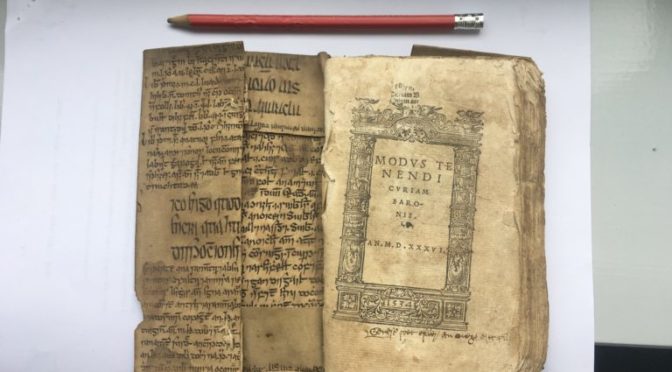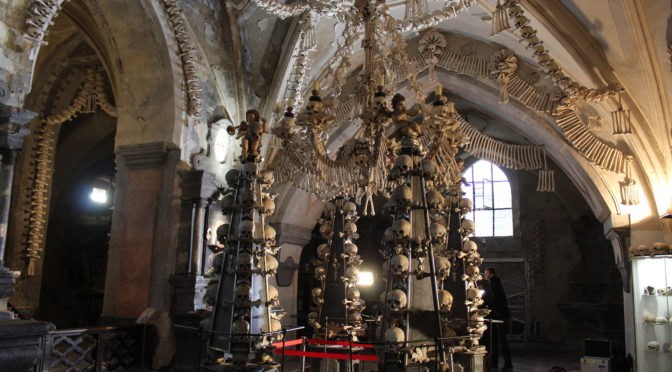The Sedlec Abbey ossuary in Kutná Hora, Czech Republic, is known worldwide for its extravagant towers, massive central chandelier and decorative flourishes constructed of human bone. The Sedlec Ossuary is one of the greatest tourist draws in the Czech Republic, attracting a half million visitors a year.
The church was originally built around 1400 after the monastery’s cemetery became a major regional draw due to its having been sprinkled with soil from Golgotha in the 13th century. Death’s rich harvest during the Bubonic Plague of the mid-14th century and the Hussite Wars 50 years later gave the cemetery more business than it could handle, and the church included an ossuary on the lower level so bones could be stored to make room for new graves.
For hundreds of years monks collected bones in stacks in the ossuary, but the artistic bone structures as they exist today were created by woodcarver Frantisek Rint in 1870. (He signed his work, yes, in bone.) It’s estimated that the skeletons of 40,000-70,000 individuals, 60,000 or so skulls and 450,000 long bones, were used to create four large pyramidal mounds in each corner of the chapel and the other decorations in the nave and on the walls.
Now those famous pyramids are being dismantled as part of a major restoration project to repair structural issues of the mounds and of the church building itself. Without dismantling the pyramids, it’s not possible to repair plaster walls, floors and windows and dehumidify the space.
Restorers began to dismantle the first of the four pyramids in November. The bones are being placed in paper boxes one at a time and removed to a conservation laboratory where each bone will be surface cleaned, soaked in a weak lime solution and dried. They won’t be scoured or even cleaned as thoroughly as restorers cleaned the hanging elements like the chandelier and the Schwarzenberg coat of arms
The biggest concern is that over time the pyramids have suffered damage at the base. The deformation of the lower layers poses a danger to the entire structure and the deconstruction will hopefully help identify the root cause of the problem. It could largely be a matter of weight, the towers being too massive for the bones on the bottom to bear. Endemic mold and moisture also play a part.
It’s already clear that some of the bones have been irreparably damaged by moisture and will have to be replaced. What material will be used is undetermined at this juncture. Bones from a neighboring church with a small ossuary could be borrowed, or copies could be made out of mineral materials.
In order to rebuild the pyramids so they look exactly the same as they used to, experts will have to replace and shore up damaged parts in ways that do not alter the original design. The firm Nase Historie has been engaged to scan the bone towers using photogrammetry, thousands of high-resolution images mapped and stitched together to create an extremely accurate 3D model.
Conservators estimate that it will take at least four months to dismantle each tower, but that’s speculative at this point. Nobody really knows what’s in these pyramids, the real number of bones, whether there is any debris or osseous material shoring up the intact bones. Being able to count precisely how many bones were used to create these towers is another unique opportunity afforded by the restoration project.
As restorers work on the towers, visitors continue to be allowed access to the chapel. A dust-proof barrier separates the pyramids and chapel, but there are windows in it to give people a chance to see the reconstruction.

